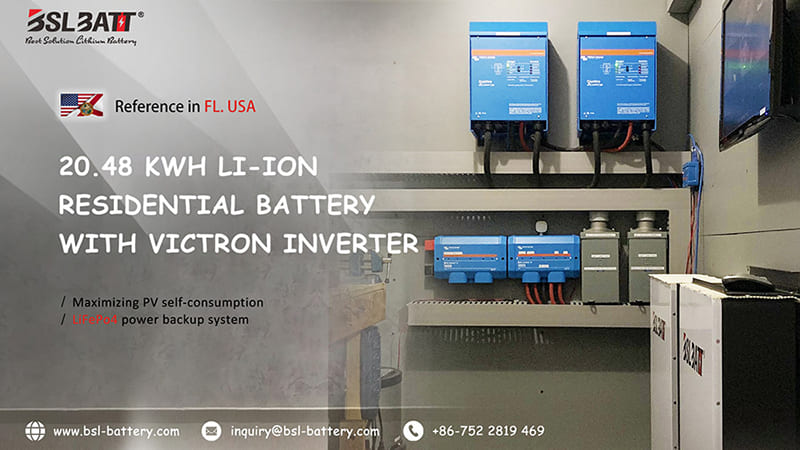Industry Application
Product Type
7 Reasons to Switch From Lead-acid to LiFePo4 Battery
| Lithium iron phosphate battery’s full name is lithium iron phosphate lithium-ion battery, abbreviated as LiFePo4 or LFP battery. Because of its performance is particularly suitable for power applications, such as electric forklifts, electric golf carts, AGVs, and cleaning vehicles have excellent performance, so it is also known as a “lithium iron (LiFe) power battery”.
Lithium iron phosphate battery refers to the lithium-ion battery with lithium iron phosphate as the cathode material. Lithium-ion battery cathode materials are mainly lithium cobaltate, lithium manganate, lithium nickelate, ternary materials, lithium iron phosphate, etc. Among them, lithium cobaltate is currently the majority of lithium-ion battery cathode material.
1. Improvement of Safety PerformanceLithium iron phosphate crystals in the P-O bond are stable, and difficult to decompose, even at high temperatures or overcharge will not be as lithium cobaltate structure collapses heat or the formation of strong oxidizing substances, so it has good safety. There is a report that a small number of samples were found to be burning in the pinprick or short-circuit test, but there was no case of explosion, while there was still an explosion in the overcharge test when it was charged with a high voltage that greatly exceeded its own discharge voltage by several times. Despite this, the overcharge safety has been greatly improved compared with the ordinary liquid electrolyte LiCoO2. 2. The Improvement of LifeLithium iron phosphate battery is a lifepo4 battery pack with lithium iron phosphate as the cathode material. Long-life lead-acid battery cycle life of about 300 times, up to 500 times, while the LiFePo4 battery pack, a cycle life of more than 2000 times, the standard charge (5 hours rate) use, can reach 2000 times. The same quality of lead-acid batteries is “new half-year, old half-year, maintenance and a half year”, at most 1 ~ 1.5 years, while lithium iron phosphate batteries used under the same conditions, the theoretical life will reach 10 ~ 15 years. Considered together, the performance-to-price ratio is theoretically more than four times that of lead-acid batteries. High-current discharge can be a high-current 2C rapid charge and discharge, in a special charger, 1.5C charging within 40 minutes can make the battery full, starting current up to 2C, while the lead-acid batteries do not have this performance.
3. High-temperature PerformanceLithium iron phosphate electric heat peaks up to 350 ℃ -500 ℃ and lithium manganate and lithium cobalt acid only in about 200 ℃. Wide operating temperature range (-20C – 75C), with high-temperature resistance lithium iron phosphate peak electrical heating up to 350 ℃ -500 ℃ and lithium manganate and lithium cobalt only in about 200 ℃. 4. Large CapacityRechargeable batteries often work under the conditions of full not put out, the capacity will quickly fall below the rated capacity value, a phenomenon called the memory effect. Like nickel-metal hydride, nickel-cadmium batteries have memory, while lithium iron phosphate batteries do not have this phenomenon, no matter what state the battery is in can be used as it is charged, with no need to first put out and then recharge. 6. LightweightLiFePo4 battery pack of the same capacity volume is 2/3 of the volume of lead-acid batteries, the weight is 1/3 of the lead-acid batteries. 7. Environmental ProtectionLiFePo4 battery pack is generally considered to be free of any heavy metals and rare metals (NiMH batteries require rare metals), non-toxic (SGS certification through), non-polluting, in line with European RoHS regulations, for the absolute green battery certificate. So lithium batteries are favored by the industry, mainly because of environmental considerations. However, some experts say that the environmental pollution caused by lead-acid batteries mainly occurs in the enterprise’s unregulated production process and recycling treatment. Similarly, lithium batteries belonging to the new energy industry are good, but they can not avoid the problem of heavy metal pollution. Metal material processing has lead, arsenic, cadmium, mercury, chromium, etc. are likely to be released into the dust and water. The battery itself is a chemical substance, so there may be two kinds of pollution: one is the production engineering process excretion pollution; the second is the battery pollution after the end of life.
Lithium iron phosphate batteries also have their drawbacks: for example, poor low-temperature performance, cathode material vibranium density is small, and the volume of lithium iron phosphate batteries of equal capacity is larger than lithium cobalt acid and other lithium-ion batteries, so it does not have an advantage in micro-batteries. And for power batteries, lithium iron phosphate batteries and other batteries, like other batteries, need to face the problem of battery consistency. |
A Guide to Choosing the Best 48V Lithium Golf Cart Battery
Would it be worth investing in a 48V ...
10 Exciting Ways To Use Your 12V Lithium Batteries
Back in 2016 when BSLBATT first began designing what would become the first drop-in replacemen...
BSLBATT Battery Company Receives Bulk Orders from North American Customers
BSLBATT®, a China Forklift battery manufacturer specializing in the material handling indust...
Fun Find Friday: BSLBATT Battery is coming to another great LogiMAT 2022
MEET US! VETTER’S EXHIBITION YEAR 2022! LogiMAT in Stuttgart: SMART – SUSTAINABLE – SAF...
Looking for new Distributors and Dealers for BSL Lithium Batteries
BSLBATT battery is a fast-paced, high-growth (200% YoY ) hi-tech company that is leading the a...
BSLBATT to Participate at MODEX 2022 on March 28-31 in Atlanta, GA
BSLBATT is one of the largest developers, manufacturers, and integrators of lithium-ion batter...
What makes the BSLBATT the Superior Lithium Battery for your Motive Power needs?
Electric forklift and Floor Cleaning Machines owners who seek the ultimate performance will fi...






























